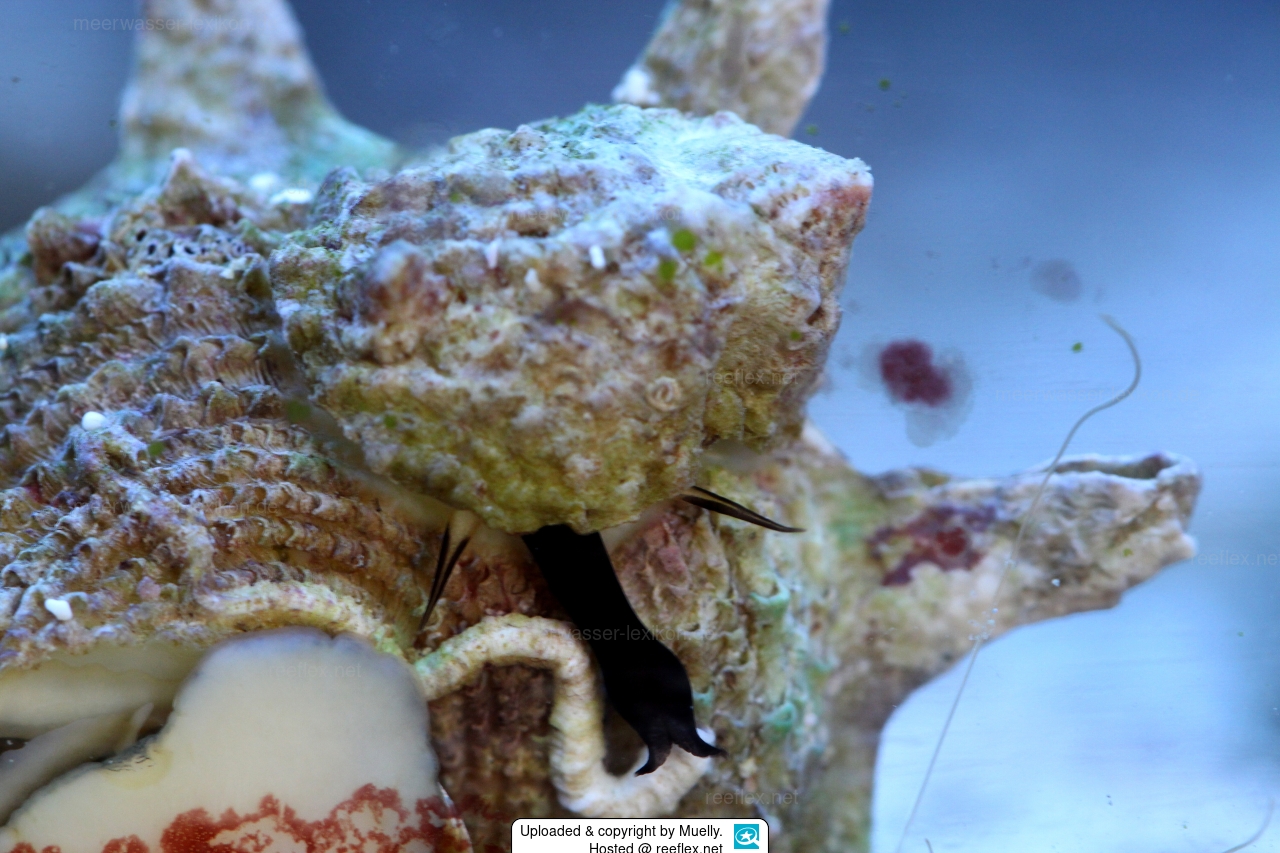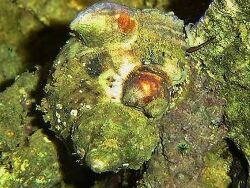Info
Hipponix sp.
Hipponix species as well as other animals in the family Hipponicidae are horse-hoof-shaped limpets with a special trait: they remain sessile for the greatest part of their lives - on rocks as well as in the case of some species on the shells of other snails. They can alter the chosen substrate to form a kind of second shell, occasionally leading to misidentification as a bivalve by hobbyists.
Those species who prefer rock are primarily filter feeders, those who are epibionts on mobile animals use their long proboscis to feed on algae, detritus and carrion in passing. They also quite frequently feed on the feces of their animal host without harming it directly.
In the home aquarium they can occasionally be found on large imported snails such as Tectus sp., Trochus sp. or Turbo sp. as well as on the shells used by hermit crabs.
In the image shown above a smaller Hipponix sp. sits on the larger specimen.
Hipponix species as well as other animals in the family Hipponicidae are horse-hoof-shaped limpets with a special trait: they remain sessile for the greatest part of their lives - on rocks as well as in the case of some species on the shells of other snails. They can alter the chosen substrate to form a kind of second shell, occasionally leading to misidentification as a bivalve by hobbyists.
Those species who prefer rock are primarily filter feeders, those who are epibionts on mobile animals use their long proboscis to feed on algae, detritus and carrion in passing. They also quite frequently feed on the feces of their animal host without harming it directly.
In the home aquarium they can occasionally be found on large imported snails such as Tectus sp., Trochus sp. or Turbo sp. as well as on the shells used by hermit crabs.
In the image shown above a smaller Hipponix sp. sits on the larger specimen.







 Muelly
Muelly












